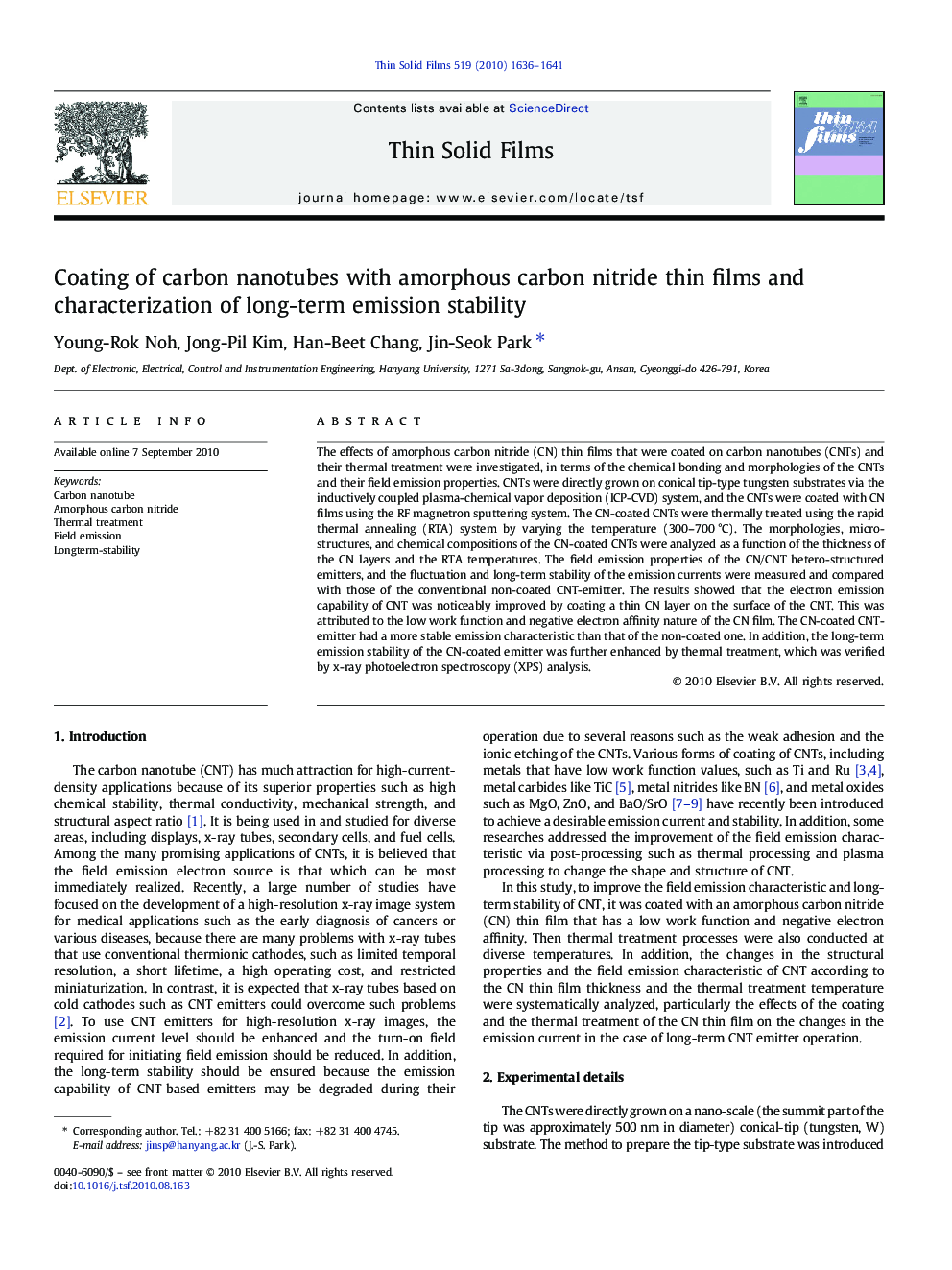| Article ID | Journal | Published Year | Pages | File Type |
|---|---|---|---|---|
| 1669790 | Thin Solid Films | 2010 | 6 Pages |
The effects of amorphous carbon nitride (CN) thin films that were coated on carbon nanotubes (CNTs) and their thermal treatment were investigated, in terms of the chemical bonding and morphologies of the CNTs and their field emission properties. CNTs were directly grown on conical tip-type tungsten substrates via the inductively coupled plasma-chemical vapor deposition (ICP-CVD) system, and the CNTs were coated with CN films using the RF magnetron sputtering system. The CN-coated CNTs were thermally treated using the rapid thermal annealing (RTA) system by varying the temperature (300–700 °C). The morphologies, microstructures, and chemical compositions of the CN-coated CNTs were analyzed as a function of the thickness of the CN layers and the RTA temperatures. The field emission properties of the CN/CNT hetero-structured emitters, and the fluctuation and long-term stability of the emission currents were measured and compared with those of the conventional non-coated CNT-emitter. The results showed that the electron emission capability of CNT was noticeably improved by coating a thin CN layer on the surface of the CNT. This was attributed to the low work function and negative electron affinity nature of the CN film. The CN-coated CNT-emitter had a more stable emission characteristic than that of the non-coated one. In addition, the long-term emission stability of the CN-coated emitter was further enhanced by thermal treatment, which was verified by x-ray photoelectron spectroscopy (XPS) analysis.
